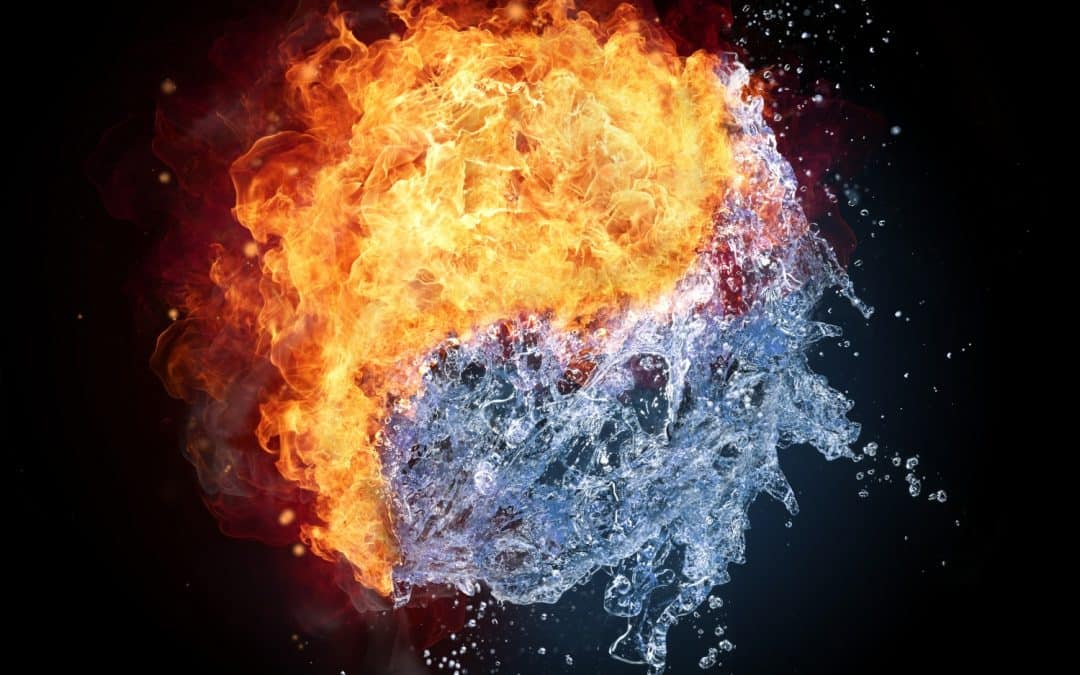The word Pitta is derived from the Sanskrit word Tap, meaning to heat, and represents the fire principle in the body, the principle of transformation and digestion in the body. Pitta Dosha is responsible for metabolism, body temperature adjustment, vision, feeling of hunger and thirst, skin coloration, body tenderness, intelligence and courage.
Everything that enters the body must be digested or “cooked”; a sight, sound, thought, emotion and anything that is swallowed. Pitta Dosha function includes the gastric fire, enzymes, and amino acids that play a major role in metabolism, and also the neurotransmitters and neuropeptides involved in thinking. Pitta responsibilities are regulating the body heat through chemical transformation of food and giving the feeling of appetite, vitality, concentration and comprehension.
Fire and Water elements give Pitta the universal attributes of Hot, Sharp, Light, Liquid, Spreading, and slightly Oily. It is associated with the colors red and yellow.
Times of increased Pitta:
- Between 10:00 – 14:00, people with excess Pitta Dosha can “lose it” during the hottest noon hours, they should decrease their activities and find a cool and shady space to calm down their burning minds.
- Between 22:00 – 2:00, time for youth party hours or for spiritual studies. People with low Pitta Dosha, low fire energy, should go to sleep before 22:00.
- Summer – season for vacation and traveling outdoors, involving movement and excitement.
- Youth and adulthood – Pitta Dosha phase of life begins soon after puberty, until the age of 50-60, when the kids are grown up and leave the house. Pitta era is the time when people are most active to achieve in life.
Primary seats of Pitta in the body:
- Small intestine.
2. Stomach, Spleen, Pancreas.
3. Liver, Gall Bladder.
4. Blood.
5. Eyes.
6. Skin.
7. Sweat glands.
8. Fat tissue.
Sense organ related to Pitta:
Vision – related to the fire element.
Tastes That Increase and Decrease Pitta
Along with the main qualities of pitta, it is also helpful to know those tastes that increase pitta and those that decrease pitta.
Pungent, sour, and salty tastes increase pitta, by increasing its hot quality. An example of the pungent taste is chili pepper; of sour: pickles and of salty: salt.
Sweet, bitter, and astringent tastes will decrease pitta by providing the opposite qualities to those of pitta. An example of naturally sweet taste is wheat; of bitter is many leafy greens and herbs; and astringent is legumes.
Signs of increased (excess) Pitta Dosha:
Red, inflamed rash, acne, cold sores
Easily burn in the sun
Acute inflammation in body or joints
Acid reflux, gastric or peptic ulcers, heartburn
Excess hunger and thirst
Nausea or discomfort upon missing meals
Loose stools
Uncomfortable feeling of heat in the body, a sensation of burning of the skin or the mucus membranes
Body odor
Hair loss
Frustration, anger, irritability
Judgment, impatience, criticism, intolerance
Edginess and bursts of anger, shouting
Inability to sleep
Workaholic
High blood pressure
Red, inflamed or light-sensitive eyes
Yellow color of the feces, urine, eyes, skin
Excessive perfectionist tendencies
Signs of decreased (deficient) Pitta Dosha:
Weak digestive power
Aversion to cold
Pale complexion
Exaggerated Physical attributes of Pitta characters:
Pitta persons have a masculine body with a medium frame and weight. They seldom gain or lose much weight, but can relatively easily gain or lose weight if they decide to. They often have bright and colorful eye and rosy cheeks. Usually they have strong appetite and thirst and like cold drinks and sweets.

